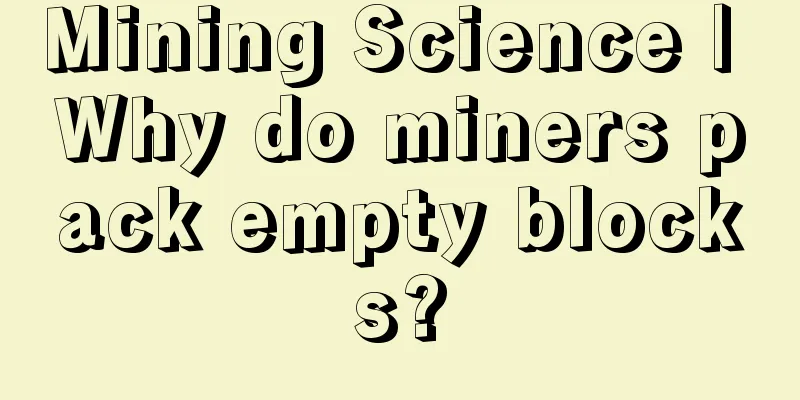Who is paying for blockchain?

|
In 2016, we witnessed the rise of blockchain evangelists. On the Internet, we see a lot of experts hyping this new technology. But in the hype, few people pay attention to this important question: Who is paying for the blockchain? This is an important consideration for anyone evaluating blockchain technology. The rise of blockchain hype began in 2015 as Bitcoin gained a bad reputation among the mainstream due to its involvement in many illegal activities. This led many Bitcoin companies to seek to transform into blockchain companies. They promised to provide the benefits of the "technology behind Bitcoin" without the unwelcome "baggage". The success of Bitcoin is due to the economic incentives of its network. This fundamental misunderstanding has led to a lot of confusion and misinformation, including the popular notion that blockchain is a new type of distributed database in which information exists forever and cannot be changed. Data can’t live forever if no one is paying for it . Before you use blockchain, let’s first understand who is paying for three popular blockchain platforms. BitcoinBitcoin is mainly used for the transfer and storage of value. Bitcoin works because miners earn money running the infrastructure of the network. Remove that incentive and everything falls apart. Most Bitcoin developers hold Bitcoin, so they have a vested interest in the success of the Bitcoin network. In addition, more than $1 billion in venture capital has been invested in Bitcoin companies to date, which has funded the development of the platform. Most importantly, this complex circular economy has been eight years in the making and involves thousands of businesses around the world. Of course, some of Bitcoin’s current $15 billion market cap is driven by speculation, but much of it comes from the users and businesses that use Bitcoin. Each participant bears a share of the cost of securing the Bitcoin network. EthereumEthereum is a blockchain host. The Ethereum network behaves like a single computer. Anyone can rent, compute, and store data on the Ethereum platform by paying Ether. Miners who maintain the network infrastructure can be rewarded with Ether, which can be exchanged for Bitcoin and eventually converted into fiat currency. Similar to Bitcoin developers, many Ethereum developers also hold Ether, and they are very interested in developing Ethereum technology. Compared with Bitcoin startups, Ethereum startups have received relatively little financing from professional VCs so far. The difference is that the Ethereum ecosystem relies on Ether speculation and project crowdfunding. To date, the Ethereum platform has not yet developed any circular economy, but this is to be expected considering that the platform is only one year old. Ethereum’s long-term growth depends on developing an ecosystem in which companies consume ether at a rate that exceeds the cost of running its network. HyperledgerI think of Hyperledger as a new enterprise software platform that also has design features of Bitcoin. Its development was guided by a host of companies, including IBM, Intel and Airbus, and Hyperledger’s network infrastructure is paid for by customers under the traditional enterprise software licensing model. The cost of running Hyperledger is similar to the cost of running a cloud application. There's nothing surprising about this. trade offThere are many things you need to consider before investing in a blockchain. Developers with blockchain expertise are rare, and developer tools are currently immature. These factors increase security risks and make blockchain development more expensive than development with more mature technology stacks. Smart companies will clearly define the problem they are trying to solve before approaching a blockchain vendor. When you talk to a vendor, you may be faced with unfamiliar terminology and grandiose promises. Be sure to evaluate non-blockchain solutions. Ask whether blockchain technology can improve your existing technology stack. Don’t forget to ask the question “who is paying for the blockchain?” Is it supported by a stable ecosystem and is it ready for adoption? Having a clear understanding of the incentives and economics behind blockchain can save you a lot of headaches. |
>>: Bitcoin Core Developer: Ensuring Bitcoin Fungibility Is Developers’ Top Priority in 2017
Recommend
Face analysis of divorce and remarriage: what kind of face is destined to lead to divorce?
The divorce rate is very high nowadays. Some peop...
Ganzi Bitcoin "mine" involved illegal construction follow-up: Kangding City rectified the "three no" projects in the Zhedong area
Cover News Reporter Tian Xuejiao Chen Yuanyang Th...
Interpretation of whether a man's hump nose is good or not, what is the fate of a man with a hump nose
Men with hump noses always give in to girls From ...
Men with these palm lines work hard
Men with these palm lines work hard More money li...
People with certain facial features have bad relationships with others. Stay away from people with these facial features!
What are some facial features that indicate bad p...
Wall Street made $2.7 trillion in two months using Bitcoin futures to harvest Asia
On December 11, 2017, the Chicago Board Options E...
Can the mole on the temple be removed? What does a mole on the temple mean?
The location of moles on each person's face i...
Are men with thick, dark beards rude and insensitive?
Precisely because people's stereotype of men ...
How to tell if you have a double chin
Generally speaking, there is a popular saying abo...
What does a short nose look like?
What does a short nose look like? Whether the nos...
What does a cheating woman look like? Which women are not loyal?
The most important thing for a woman is to do her...
Detailed explanation of palmistry with keen intuition
The so-called inspiration refers to a person'...
Can people with scars on the bridge of the nose become rich and powerful?
People with scars on the root of the nose have ba...
Palmistry tutorial: palmistry to see popularity and career development direction
Palmistry tutorial: palmistry to see popularity a...
A complete explanation of moles on a woman's body
A woman with a mole on her nose Women with moles ...


![[Exclusive] Interview with ICOINFO Lao Mao: "The suspension of ICO business is not an order, but an active response to supervision."](/upload/images/67e6ec5502e40.webp)






